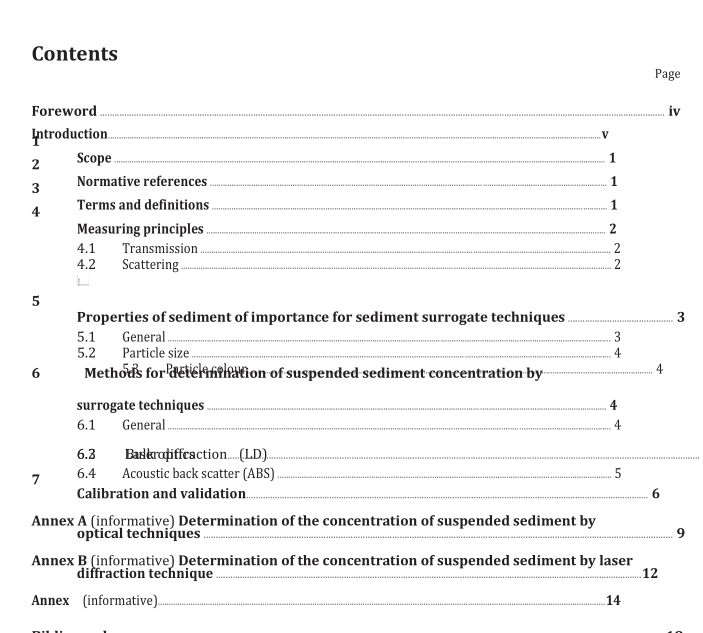BS ISO 11657 pdf download

BS ISO 11657 pdf download Hydrometry — Suspended sediment in streams and canals — Determination of concentration by surrogate techniques
1 Scope
This International Standard specifies methods for determination of the concentrations and particle-size distributions of suspended sediment in streams and canals by surrogate techniques. Methods based on bulk-optical principle of water such as transmission and nephelometry are the most commonly used surrogates for determining suspended sediment concentrations (SSC). Instruments and techniques based on acoustic attenuation and/or acoustic backscatter principles are also in use for measurement of suspended sediment concentration. Instrumentation based on the laser diffraction principle is also used for the measurement of particle size distribution. This International Standard covers brief description of the operating principle of each method and details of some of the instruments available.
The detailed method and principle of optical and acoustical transmission, nephelometry, and optical back scatter (OBS), laser diffraction technique (LD) and acoustic back scatter technique (ABS) with their limitations are described in Annex A, Annex B and Annex C respectively.
2 Normative references
The following documents, in whole or in part, are normatively referenced in this document and are indispensable for its application. For dated references, only the edition cited applies. For undated references, the latest edition of the referenced document (including any amendments) applies.
ISO 772, Hydrometry — Vocabulary and symbols
ISO 4363, Measurement of liquid flow in open channels — Methods for measurement of characteristics of suspended sediment
ISO 13320, Particle size analysis — Laser diffraction methods
3?Terms?and?definitions
For the purposes of this document, the terms and definitions given in ISO 772, ISO 4363 and ISO 13320 and the following apply.
3.1
surrogate technique
indirect method in which a substitute object or property is used for measurement in place of the original object or property
Note 1 to entry: Optical and acoustic properties of water-sediment mixture such as optical transmission, acoustic scattering and laser diffraction are some of the surrogates for measurement of suspended sediment concentration.
3.2
nephelometry
any method for estimating the concentration of particles in suspension by measuring the intensity of scattered light
Note 1 to entry: Light scattering depends upon number, size distribution, colour, composition (as manifested in the complex index of refraction) and shape characteristics of the particles.
4 Measuring principles Optical and acoustical methods can be used for continuous measurement of sediment concentration. The measuring principles for the above surrogate techniques are similar and can be classified in three categories as described in 4.1 to 4.4 (see Figure 1).
4.1 Transmission The source and detector are placed opposite to each other at a distance l as shown in Figure 1 A. The source emits a collimated light beam with intensity l o . The sediment particles in the measuring volume reduce the beam intensity by absorption and scattering resulting in a reduced detector signal. The relationship between the detector signal (l t ) and the sediment concentration (c) is described by Beer’s Law [43] and is given by Formula (1):









